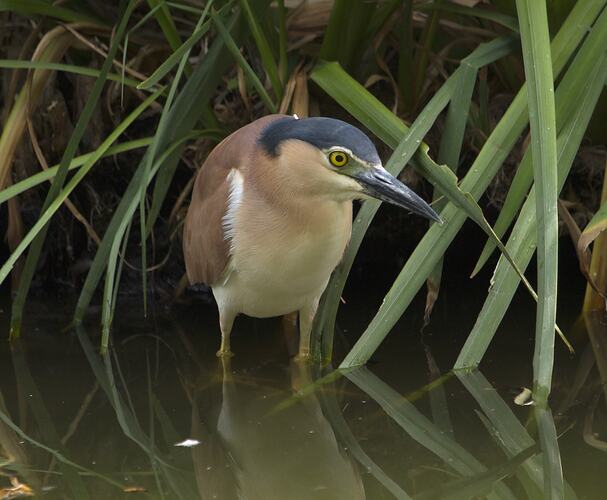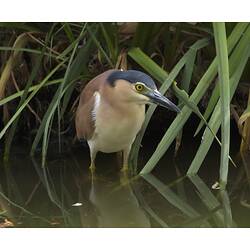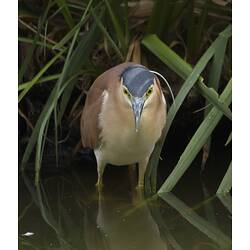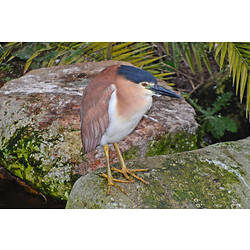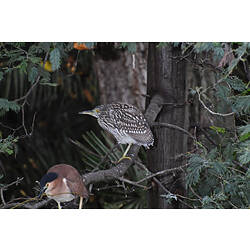General Description
The upper body is red-brown and the underparts are white. The bill and the top of the head are black. There is a patch of yellow skin between the eye and the bill, and the legs and feet are also yellow. In the breeding season, this heron has two long white plumes on the back of the head. Young birds are streaked cream and brown with white spots on the wing. Bill to tail length is up to 65 cm.
Biology
Nankeen Night-herons are a mainly nocturnal species and are most active from dusk until dawn. During the breeding season (October to May) they will also forage during the day. They feed on small fish, crustaceans, insects frogs and lizards. Nankeen Night Herons are solitary hunters but also gregarious, often forming small colonies, especially if food is scarce. They nest in trees over water or large bushes. The female lays two to five eggs which are incubated by both parents.
Distribution
Mainland Australia and Tasmania.
Habitat
Freshwater wetlands and swamps.
More Information
-
Animal Type
-
Animal SubType
-
Brief Id
A reddish-brown coloured heron with yellow legs and white streamers on the head. Often stands stooped by the water's edge looking for prey.
-
Colours
Brown, White, Red
-
Maximum Size
65 cm
-
Habitats
-
Diet
Carnivore
-
Diet Categories
Crustaceans, Fish, Insects, Frogs
-
Endemicity
-
Commercial
No
-
Conservation Statuses
CITES: Not listed, FFG Threatened List: Not listed, EPBC Act 1999: Not listed, IUCN Red List: Least Concern
-
Taxon Name
-
Common Name
Nankeen Night-heron
-
Kingdom
-
Phylum
-
Subphylum
-
Class
-
Order
-
Family
-
Genus
-
Species Name
caledonicus
